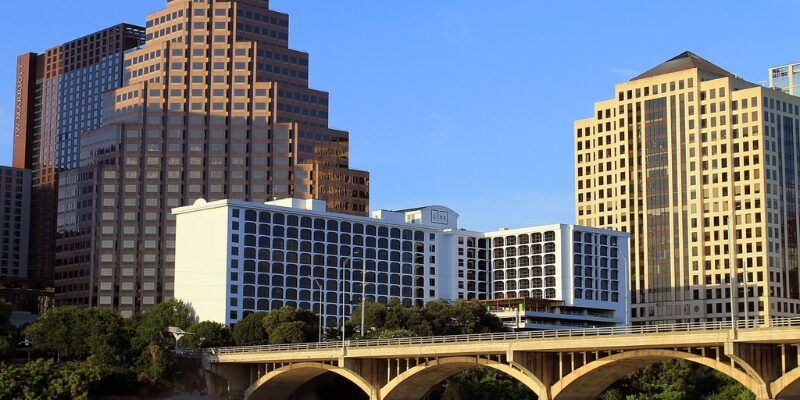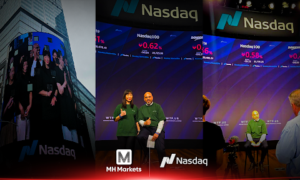Austin, Texas, has become a hotspot for technology, earning the nickname “Silicon Hills” because of the many tech companies setting up shop there. The city’s lively culture, lower cost of living (compared to Silicon Valley), and tech-friendly environment have attracted many startups, big-name companies, and workers. But Austin’s tech growth has also brought big changes to the city’s landscape, housing, infrastructure, and overall development. Let’s look at how this tech boom has changed Austin and what challenges and opportunities it’s created.
How Austin Became a Tech City
Austin’s tech journey started back in the 1980s with companies like IBM and Texas Instruments. More companies moved in because of Austin’s friendly business policies and its location near top universities like the University of Texas. Today, major companies like Apple, Tesla, Google, and Meta are in Austin, along with thousands of startups. This growth has fueled job creation, economic development, and a reputation for tech innovation, but it has also brought challenges in housing, infrastructure, and cost of living.
More Jobs, But Rising Costs
Austin’s tech scene has brought a lot of high-paying jobs, drawing people from around the country. Between 2010 and 2020, Austin’s population grew by almost 30% as tech workers moved in. This has helped boost the local economy and brings in more tax money that the city can use for infrastructure, schools, and community programs.
But not everyone has benefited equally. Tech workers might enjoy high salaries, but the rising costs of living make it tough for others in Austin who aren’t in high-paying jobs. This income gap creates challenges like economic inequality and makes it harder for lower-income residents to stay in the city.
Housing Prices Are Going Up
One of the biggest changes has been the rising demand for housing. More tech workers mean more people looking for homes, which has driven up both house prices and rent. Austin’s housing market is now one of the most competitive in the country, making it harder for long-time residents to keep up with the rising costs. This has led to “gentrification,” where wealthier people move into lower-income neighborhoods, often displacing those who can’t afford to stay.
Austin’s local government and developers are working on solutions like building more affordable housing and offering subsidies, but it’s still a challenge to keep the city affordable for everyone.
Traffic and Infrastructure Struggles
With more people in the city, Austin’s roads, public transit, and utilities are feeling the strain. Traffic congestion has become a major problem, and Austin’s infrastructure wasn’t built for such a large population. The city is looking for solutions, including expanding public transportation through projects like Project Connect, which aims to improve Austin’s light rail and bus systems.
Some tech companies are also encouraging employees to work from home, which helps reduce traffic. But to keep up with the city’s growth, Austin will need to keep improving its transportation and infrastructure.
Environmental Challenges and Solutions
The tech boom has also impacted Austin’s environment. Rapid construction can lead to air pollution, habitat loss, and strain on resources like water. Austin’s parks, rivers, and green spaces are part of what makes the city special, so it’s important to protect them.
To address these issues, the city and tech companies are focusing on sustainability. For example, Tesla’s Gigafactory near Austin uses renewable energy and aims to minimize environmental impact. Other companies are also working to reduce their carbon footprints, while the city is promoting eco-friendly building standards and protecting green areas.
Cultural Changes
The tech boom has brought people from all over, making Austin more diverse with new restaurants, entertainment, and cultural events. This diversity has enriched the city, but it’s also changed its unique, “weird” charm that many long-time residents love. Local businesses sometimes struggle to compete with larger corporations, which can make Austin feel less like the independent, artsy city it used to be.
To keep Austin’s culture alive, local leaders are supporting small businesses, artists, and community organizations. Efforts to preserve historic neighborhoods and support Austin’s arts scene are essential to maintaining the character that has drawn people to the city in the first place.
Conclusion
Austin’s tech boom has brought incredible growth, but it has also created some big challenges. The city will need to balance growth with affordability, sustainability, and livability to stay successful. Careful urban planning can help, and other cities can learn from Austin’s experience as they face similar tech-driven growth.
In the end, Austin’s tech boom offers big opportunities, but also calls for smart planning to ensure the city remains a great place to live for everyone. By focusing on affordable housing, sustainable practices, and preserving Austin’s unique culture, the city can continue to thrive as a top tech destination and a welcoming home for people of all backgrounds.



































